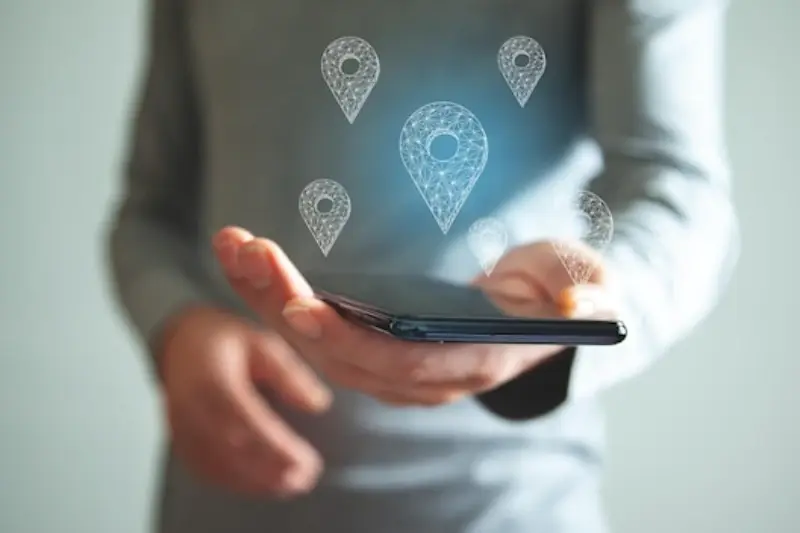The Dark Side of Dating App Development: Safety
Last year, a woman in Manchester thought she'd found the perfect match on a popular dating app. After weeks of chatting, they arranged to meet for coffee. She shared her location with him through the app's built-in feature, thinking it would make meeting up easier. What she didn't realise was that this seemingly innocent action had given a complete stranger access to her exact whereabouts—and he wasn't who he claimed to be. The meeting never happened, but the fear that followed changed how she thought about dating apps forever.
I've been working with app development teams for years, and dating apps present some of the most complex safety challenges I've encountered. These platforms handle incredibly personal information—photos, locations, preferences, messages—all whilst trying to help people find meaningful connections. It's a balancing act that many developers struggle with, and the consequences of getting it wrong can be severe.
The challenge isn't just building features that work; it's building features that protect users without making the experience feel like a security checkpoint
The reality is that dating app safety isn't just about preventing catfishing or fake profiles anymore. We're dealing with stalking, harassment, data breaches, underage users, and complex legal requirements that vary by country. Every feature decision—from how profiles are verified to how location data is handled—can impact user safety in ways that aren't always obvious during development.
Common Safety Risks Users Face
Dating apps can be brilliant for meeting new people, but they come with real dangers that developers need to understand. I've worked on several dating platforms over the years and the safety concerns are genuinely worrying—not just theoretical problems but actual risks that affect real users every day.
Physical Safety Threats
Meeting strangers from the internet carries obvious risks. Users might encounter people who lie about their identity, age, or intentions. Some predators specifically target dating apps to find victims. Location sharing features, whilst convenient for arranging meetups, can accidentally reveal where someone lives or works if not properly controlled.
Digital Safety Issues
Online harassment happens frequently on dating platforms. Users face unwanted messages, threats, or persistent contact after saying no. Fake profiles are everywhere—people use stolen photos or completely made-up identities. Then there's catfishing, where someone pretends to be a different person entirely to trick others into emotional or financial relationships.
- Identity theft through shared personal information
- Financial scams and romance fraud
- Revenge sharing of private photos
- Stalking and persistent unwanted contact
- Blackmail using intimate conversations or images
These aren't rare occurrences either. Most dating app users will experience at least one safety issue during their time on these platforms, which is why building proper protection measures isn't optional—it's absolutely necessary.
Privacy Problems and Data Protection Issues
Dating apps collect some of the most personal information you can imagine—photos, location data, sexual preferences, relationship history, and private messages. This creates a goldmine for hackers and a nightmare for users when things go wrong. I've worked on several dating app projects over the years, and the amount of sensitive data these platforms handle is genuinely staggering.
The biggest privacy problems come from poor data encryption and insecure servers. When dating apps get breached (and they do get breached more often than you'd think), users face serious consequences. We're talking about blackmail, identity theft, and deeply personal information being sold on the dark web. Location tracking is another major concern—many apps continuously monitor where users are, which can put people in real danger if this data falls into the wrong hands.
Always implement end-to-end encryption for all user communications and store the absolute minimum amount of personal data needed for your app to function properly.
Then there's the issue of data sharing with third parties. Many dating apps sell user information to advertisers or share it with parent companies without clear consent. Users often have no idea how their private details are being used beyond finding matches. The lack of transparency around data collection and usage has become a serious trust issue for the entire dating app industry.
Legal Rules Dating Apps Must Follow
Building dating apps isn't just about creating smooth swipes and clever matching algorithms—there's a whole web of legal requirements that developers need to follow. I've worked on several dating platforms over the years, and trust me, the legal side can be quite overwhelming if you don't know what you're getting into.
Data Protection Laws
The biggest legal hurdle? Data protection regulations like GDPR in Europe and various privacy laws around the world. Dating apps collect incredibly personal information—location data, photos, sexual preferences, relationship history—and all of this needs to be handled with extreme care. Users must give clear consent for how their data is used, and they have the right to delete their information completely when they leave the platform.
Terms of Service and User Safety
Dating apps also need rock-solid terms of service that clearly outline what behaviour is acceptable and what isn't. Many jurisdictions now require apps to have proper reporting systems for harassment and abuse. Some places are even introducing laws that specifically target online dating platforms, requiring them to verify user identities or implement certain safety features. The legal landscape is constantly changing, which means staying compliant is an ongoing process rather than a one-time tick box exercise.
Age Verification and Child Protection Requirements
This is where dating app development gets really serious—and frankly, where many developers mess up badly. Age verification isn't just a nice-to-have feature; it's a legal requirement in most countries. Dating apps must keep children under 18 away from their platforms, full stop.
The tricky bit is that simple "Are you over 18?" checkboxes don't cut it anymore. Regulators want proper verification systems that actually check people's ages. Some apps now require photo ID uploads or use third-party verification services. Yes, it adds friction to the sign-up process, but the alternative—having minors on your platform—can shut you down completely.
Beyond Just Checking Ages
Child protection goes deeper than age gates though. Apps need monitoring systems that can spot adults trying to groom younger users who might have slipped through. The algorithms need to flag suspicious behaviour patterns; the reporting systems must work quickly when problems arise.
Child safety isn't negotiable in dating app development—get it wrong and you're facing criminal liability, not just bad reviews
I've worked with clients who wanted to skip proper age verification to reduce development costs. That's a conversation that ends quickly! The legal risks are massive, and the reputational damage from child safety failures can destroy a company overnight. Build it right from day one.
Handling Harassment and Abuse Reports
When someone reports harassment or abuse on your dating app, you need to act fast. I've worked on apps where delayed responses turned minor issues into major problems that could have been avoided entirely. Users need to know their reports matter and that someone is listening.
Setting up a proper reporting system isn't just about having a button that says "report user"—though that's where it starts. You need clear categories so users can specify what happened: inappropriate messages, fake profiles, threatening behaviour, or unwanted photos. The more specific the report, the better you can respond.
Building Your Response Process
Your team needs a clear workflow for handling reports. Some cases need immediate action whilst others require investigation. Here's what works best:
- Automatic temporary restrictions for serious reports like threats
- Human review within 24 hours for all harassment claims
- Clear documentation of decisions made
- Follow-up messages to both reporter and reported user
- Appeals process for users who feel they were wrongly restricted
The tricky part is balancing quick action with fairness. Nobody wants to be banned unfairly, but victims of harassment shouldn't have to wait days for help. Most successful apps I've worked on use a combination of automated filters for obvious violations and human moderators for complex situations.
Content Moderation and Community Guidelines
Setting up proper community guidelines for dating apps isn't just about being nice—it's about keeping everyone safe. When I'm working with clients on dating app projects, this is where things get really technical and expensive fast. You need systems that can spot dodgy photos, inappropriate messages, and fake profiles before they cause problems.
The challenge is that dating apps need to feel personal and intimate, but they also need strict rules. Users want to express themselves freely, yet you can't let harassment slide. It's a balancing act that requires both smart technology and human oversight.
What Your Guidelines Must Cover
- Photo standards and nudity policies
- Acceptable messaging behaviour
- Profile information requirements
- Consequences for rule breaking
- Appeal processes for banned users
Most dating apps use a combination of artificial intelligence and human moderators to review content. The AI catches obvious violations like explicit images, while humans handle the grey areas—like determining if someone's being genuinely flirty or crossing into creepy territory.
Make your community guidelines visible and easy to understand. Users can't follow rules they don't know exist, and clear guidelines protect you legally when you need to ban someone.
The tricky part is enforcement. Ban someone too quickly and you might lose legitimate users; wait too long and you risk letting dangerous behaviour escalate.
Conclusion
Building a dating app isn't just about creating pretty profiles and swipe mechanics—safety has to be at the heart of everything you do. I've worked on apps where developers treated safety features as an afterthought, and let me tell you, that's a recipe for disaster. The regulatory landscape is getting tougher every year, users are more aware of their rights, and one safety incident can destroy years of hard work.
From age verification systems that actually work to robust content moderation tools, every safety feature needs proper planning and resources. It's not cheap—good safety measures can add significant costs to your development budget—but the alternative is much worse. We're talking about potential lawsuits, regulatory fines, and permanent damage to your brand reputation.
The most successful dating apps I've helped build are the ones where safety was considered from day one, not bolted on later. Whether it's implementing proper data encryption, creating clear community guidelines, or building effective reporting systems, these features need to be part of your core architecture. Your users are trusting you with incredibly personal information and their physical safety; that's not a responsibility to take lightly.
Share this
Subscribe To Our Blog
You May Also Like
These Related Stories

Data Protection Licensing: GDPR Impact on App Permissions

Location Privacy Laws Every App Developer Must Know Before Launch





